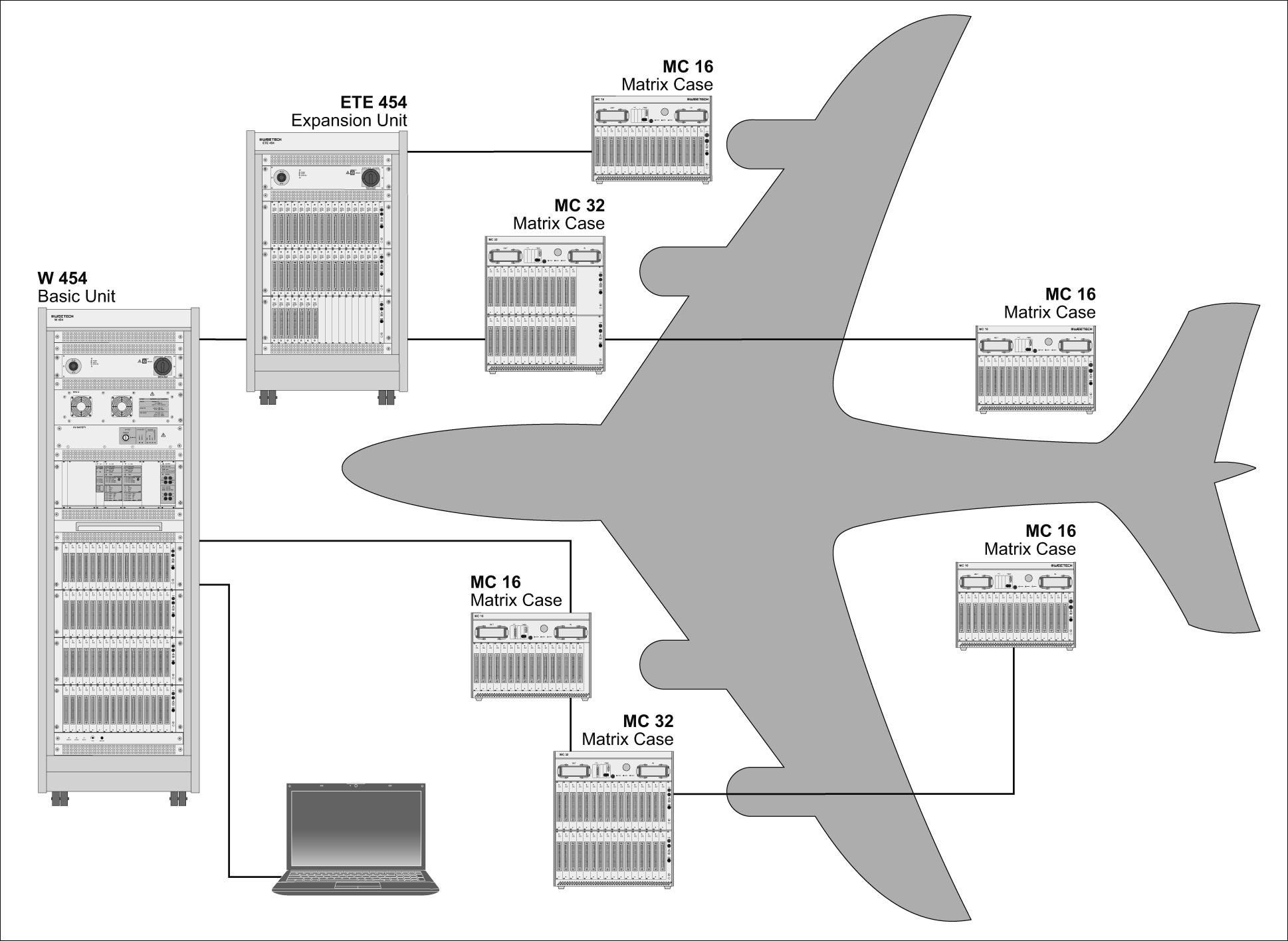A distributed system or distributed switching matrix means the distribution of test points of one test system over a broader area. This becomes necessary if the unit under test (UUT) expands over a broad area, too. Above all, examples can be found in the aerospace industry and in the railway and transportation industry where entire helicopters or trains need to run through a functional test.
For a distributed matrix, in addition to the centrally placed basic unit so-called expansion units or matrix cases are placed at spots with a high number of test points. These units are then connected with only one single cable with the basic unit and simplify the installation enormous.
Instead of a huge number of individual adaption cables from the test points of the basic unit over a long distance to the respective connection points in the UUT, the inspector only needs to connect the basic unit with one cable with the expansion unit (matrix case). From there, only relatively short adaption cables are needed to connect with the UUT.
Beside a simplified installation of the adaption (less cable, less weight), increased workplace safety (reduced risk of stumbling) it has also physical advantages: fewer voltage drops occur and the measuring accuracy increases.
Basic unit and expansion units can be linked chain-like topology, in a star-shape manner or as a mixture of both variants.
